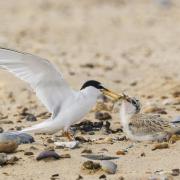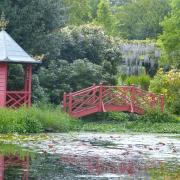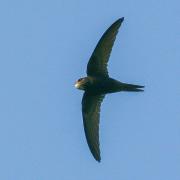I’m enjoying a coffee with Suffolk Magazine editor Jayne Lindill when she throws down the gauntlet. Having regaled her with stories of my enduring ordeals trying to photograph rare animals abroad, I’ve obviously sown the seeds for a story within her journalistic mind.
'Why don’t you chronicle your quest to photograph an elusive Suffolk species for the magazine?' she asks. I immediately like the idea – I’m certainly familiar with investing days or even weeks in the pursuit of animals that prefer to stay out of sight.
So, when otters are suggested as the target for my mission, I retrieved the metaphorical glove and accept Jayne’s challenge with relish. Since working at the Otter Trust in my youth, I've had a strong affection for these charismatic semi-aquatic mammals. With my experience of caring for 50 captive otters and reasonable knowledge of their habits I feel confident that with time and patience I will be able to capture the required image.

My only previous photos of wild Suffolk otters were taken at RSPB Minsmere, so I decide this will be my first port of call. Knowing that otters are largely nocturnal by nature, I make an early morning start, to improve my chances of spotting one, and set off before sunrise.
My morning is spent sitting quietly in hides overlooking reedbeds where I have had my previous successes. As usual at this wonderful sanctuary there are plenty of interesting birds; marsh harriers, avocets and a snipe skulking in the reeds, but on this occasion no otters.
Before ending my watch, I browse through the reserve’s Otter Log and note that the most recent sighting had been the previous morning. Interestingly, in addition to dawn and dusk sightings there are plenty of daytime entries, suggesting that in protected areas otters are more diurnal.
I leave my search a week before targeting another reserve with great otter potential, Suffolk Wildlife Trust’s Lackford Lakes. After a walk around the reserve, I settled down for another long hide session. Whilst scanning the water I engage in a whispered conversation with another photographer and learn that an otter had been active in front of one of the hides the previous day. I’m starting to realise that the best time to see an otter is... yesterday.

I come away with some kingfisher portraits, so I’m pleased with my day’s work despite not sighting my target species.
After this latest no-show I contemplate heading to Lakenheath Fen, another of the county’s otter hotspots. Instead, I decide to seek some expert advice to assist me in my mission by contacting the Suffolk Otter Group, a voluntary organisation that monitors the population of these apex predators.
After a brief telephone conversation, I’m delighted to be invited by Penny Hemphill to attend a forthcoming otter training day to pick up some tips for detecting their presence. A few weeks later I join the volunteers and half a dozen other otter enthusiasts. We listen to some expert presentations and watch a slideshow of otter tracks, trails, resting spots and dens (holts). A jar of fresh droppings, or spraint, is even circulated for us to smell and become familiar with.

We’re given handouts detailing the best places to look for signs of this evasive animal, and other useful information. During the meeting, I learn that some of the Suffolk volunteers who have been undertaking riverside surveys for years have never seen a wild otter in the flesh. Doubts about my initial belief that I can capture an image good enough for publication begin to grow...
After the morning classroom session, we spend the afternoon visiting a couple of locations on the River Deben, looking for otter activity. We don't find any tracks or trails, but we do find fresh spraint below bridges at both locations, proving that they are resident in the area. Not surprisingly we haven’t seen any otters, but I go away feeling I have some new knowledge of my quarry’s habits that can only assist in my ongoing hunt.
Armed with my recently acquired otter tracking skills, I head out to Belstead Brook on the southern fringe of Ipswich where I know they have been active recently. I enjoy my riverside walk and get some pictures of a little egret fishing but... no sign of the master fisher I yearn to photograph.

Then, my assignment takes an unexpected twist as I hear rumours of a daylight sighting in an urban park in Ipswich. This is totally out of character for the secretive and largely nocturnal animal that I've been stalking for three months now. However, it's not without precedence. I recall urban otters being regularly spotted fishing in daylight hours in Thetford town centre in 2013.
Holywells Park, the location of the alleged sighting is just 20 minutes' drive from my home, so although my expectations aren’t high, I immediately go and investigate. As I walk through the park gates, passing the cafe and other facilities, I see a group of people gathered in front of a small pond, most with cameras in hand. Surely it couldn’t be, could it?

As I join the gathering, my camera is already out and switched on. And there it is, at the back of the pond – an otter in Ipswich in broad daylight. I spend three hours enchanted by the aquatic hunter as it pursues its prey in the weed covered water, catching and consuming several small fish in front of an adoring audience.
With each dive a train of air bubbles reveals the direction of the predator's chase. Its compact, streamlined head breaks the surface momentarily, just enough time for me to capture a couple of frames before it submerges again. Occasionally we’re treated to a full body shot as it briefly hauls itself out of the water, just metres away, and the images I capture exceed all my expectations.
I have spent several days over the course of three months searching for Suffolk’s elusive otters in some of the county’s best nature reserves and secluded rivers, but my mission finally comes to a satisfactory conclusion in a small pond in an urban park. It feels a bit like finding the Holy Grail at the back of your garden shed.




Otter facts
Eurasian otter (Lutra lutra)
Length of body: 60 - 85cm
Length of tail: 35cm - 55cm
Weight: 5kg - 15kg (males larger than females)
Habitat: Freshwater including rivers and lakes (in Scotland also coastal)
Diet: 80 per cent fish but will also take birds, small mammals, amphibians and crustaceans
Reproduction: Can breed at any time of year with usually two or three cubs born in a holt



























